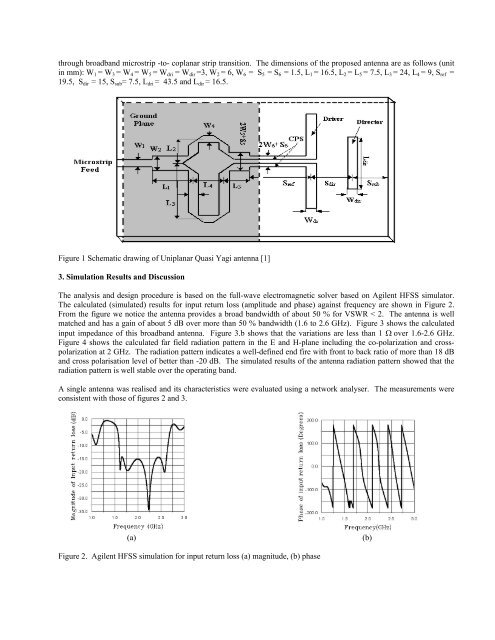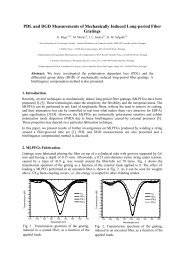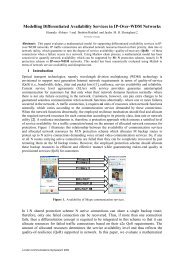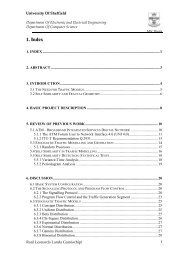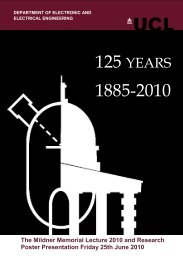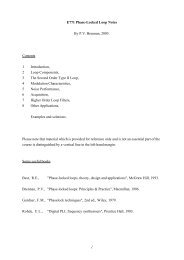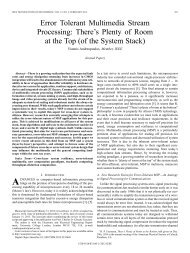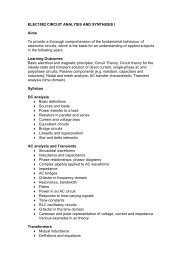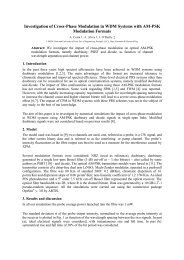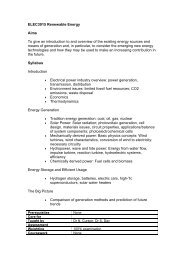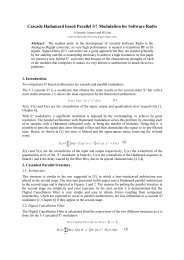Uniplanar Wideband Quasi Yagi Antenna for Multiple Antenna ...
Uniplanar Wideband Quasi Yagi Antenna for Multiple Antenna ...
Uniplanar Wideband Quasi Yagi Antenna for Multiple Antenna ...
Create successful ePaper yourself
Turn your PDF publications into a flip-book with our unique Google optimized e-Paper software.
through broadband microstrip -to- coplanar strip transition. The dimensions of the proposed antenna are as follows (unit<br />
in mm): W 1 = W 3 = W 4 = W 5 = W dri = W dir =3, W 2 = 6, W 6 = S 5 = S 6 = 1.5, L 1 = 16.5, L 2 = L 5 = 7.5, L 3 = 24, L 4 = 9, S ref =<br />
19.5, S dir = 15, S sub = 7.5, L dri = 43.5 and L dir = 16.5.<br />
Figure 1 Schematic drawing of <strong>Uniplanar</strong> <strong>Quasi</strong> <strong>Yagi</strong> antenna [1]<br />
3. Simulation Results and Discussion<br />
The analysis and design procedure is based on the full-wave electromagnetic solver based on Agilent HFSS simulator.<br />
The calculated (simulated) results <strong>for</strong> input return loss (amplitude and phase) against frequency are shown in Figure 2.<br />
From the figure we notice the antenna provides a broad bandwidth of about 50 % <strong>for</strong> VSWR < 2. The antenna is well<br />
matched and has a gain of about 5 dB over more than 50 % bandwidth (1.6 to 2.6 GHz). Figure 3 shows the calculated<br />
input impedance of this broadband antenna. Figure 3.b shows that the variations are less than 1 Ω over 1.6-2.6 GHz.<br />
Figure 4 shows the calculated far field radiation pattern in the E and H-plane including the co-polarization and crosspolarization<br />
at 2 GHz. The radiation pattern indicates a well-defined end fire with front to back ratio of more than 18 dB<br />
and cross polarisation level of better than -20 dB. The simulated results of the antenna radiation pattern showed that the<br />
radiation pattern is well stable over the operating band.<br />
A single antenna was realised and its characteristics were evaluated using a network analyser. The measurements were<br />
consistent with those of figures 2 and 3.<br />
(a)<br />
(b)<br />
Figure 2. Agilent HFSS simulation <strong>for</strong> input return loss (a) magnitude, (b) phase


